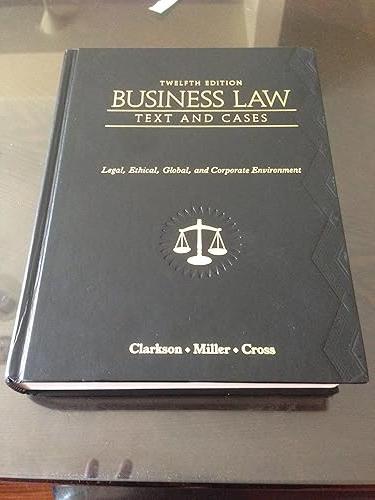Savannah Boles brought suit against Sun Ergoline, Inc., asserting a strict products liability claim for personal injury.
Question:
Savannah Boles brought suit against Sun Ergoline, Inc., asserting a strict products liability claim for personal injury. Sun Ergoline moved for summary judgment, countering that Boles’s claim was barred by a release she signed prior to using its product.
The trial court agreed and granted Sun Ergoline’s motion on the basis of the following undisputed facts.
Executive Tans operated an upright tanning booth manufactured by Sun Ergoline. Prior to using the booth, Boles signed a release form provided by Executive Tans that contained the following exculpatory agreement: “I have read the instructions for proper use of the tanning facilities and do so at my own risk and hereby release the owners, operators, franchiser, or manufacturers, from any damage or harm that I might incur due to use of the facilities.” After entering the booth, several of Boles’s fingers came in contact with an exhaust fan located at the top of the booth, partially amputating them.
On direct appeal, the court of appeals affirmed. * * * [It found]
that the language of the release was broad enough to include any damage or harm that might occur due to Boles’s use of the facilities [and] * * *
found no violation of public policy.
We granted Boles’s petition for a writ of certiorari [a request by the losing party asking the higher court to hear the case] challenging the court of appeals’ determination that the exculpatory agreement barred her strict products liability claim.
* * * *
“Strict products liability” has been described as a “term of art that reflects the judgment that products liability is a discrete area of tort law which borrows from both negligence and warranty” but “is not fully congruent with classical tort or contract law.” Rather than resting on negligence principles, it “is premised on the concept of enterprise liability for casting a defective product into the stream of commerce.” In strict products liability, the focus is on the nature of the product rather than the conduct of either the manufacturer or the person injured.
[Emphasis added.]
As such, strict products liability evolved to accommodate, and is driven by, public policy considerations surrounding the relationship between manufacturers and consumers in general, rather than any particular transaction or contract for sale. In addition to the typical inaccessibility of information and inequality of bargaining power inherent in any disclaimer or ordinary consumer’s agreement to release a manufacturer, a claim for strict products liability is also premised on a number of public policy considerations that would be flatly thwarted [prevented] by legitimizing such disclaimers or exculpatory agreements. Not least among these is the deliberate provision of economic incentives for manufacturers to improve product safety and take advantage of their unique “position to spread the risk of loss among all who use the product.”
* * * The Second Restatement of Torts clearly indicates that exculpatory agreements between a manufacturer and an end-user can have no effect. * * * The Third Restatement would even more emphatically prohibit “contractual exculpations”
from barring or reducing otherwise valid products liability claims for personal injuries by ordinary consumers against sellers or distributors of new products.......
Questions:-
1. What did the court mean when it stated that strict product liability laws are “not fully congruent” with classical tort law?
2. Why would the enforcement of the exculpatory clause in this case conflict with the rationale underlying strict product liability?
Step by Step Answer:

Business Law Text And Cases Legal Ethical Global And Corporate Environment
ISBN: 9780538470827
12th Edition
Authors: Kenneth W. Clarkson, Roger LeRoy Miller, Frank B. Cross





